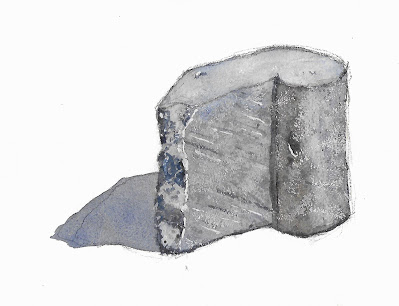 |
| Prussia Cove Mark Making Tools - Drawing and Painting the Landscape Acrylic Ink on Paper 34cm x 28cm (13.5" x 11") |
The exercise for Lesson 24 of Drawing and Painting the Landscape by Philip Tyler is to create your own mark making tools and explore the marks they make. I score an F for this one because I didn't read the instructions properly. I missed a couple of critical points in Philip’s explanation:
- The exercise is about making pens - not brushes
- Philip used bamboo cut from the garden as handles for his home-made pens
I used fingers, sponges, old credit cards, bits of mount board, sticks, cotton buds and spray bottles to draw instead of making them into tools because I couldn't find anything to use as handles - even though Elaine and I have bamboo bushes in our garden - doh. Then I got carried away and treated this as a painting exercise because Phillips' home made tools look more like brushes than pens.
 |
| The Old Lodge Mark Making Tools - Drawing and Painting the Landscape Acrylic Ink on Paper 35cm x 24.75cm (13.75" x 9.75") |
Never mind, I can cope with the F, I was getting bored with monochrome and I still managed to learn a bit more about mark making.



